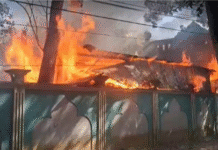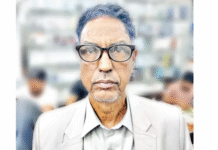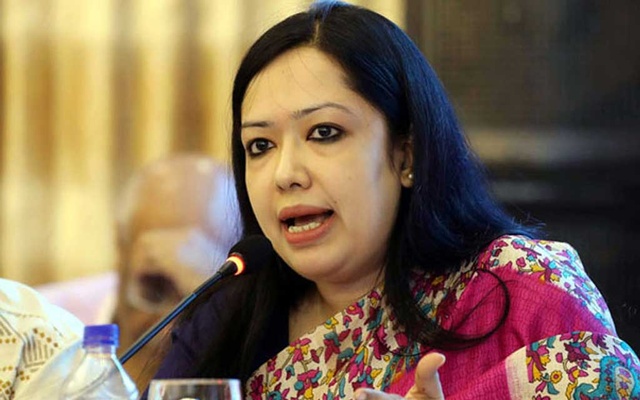TBS

As a kid from the late 90s, passing down a road always made me wonder, why are buildings so boring to look at? They all looked almost similar, either with a series of windows or at most one or two solid grill boundary balconies. But if you look over now, in the bustling cities of Bangladesh, residential architecture is undergoing a quiet revolution. For decades, apartment buildings were nothing more than utilitarian boxes—plain, repetitive structures built quickly to meet soaring demand. But the landscape is changing.
Today, a new wave of thoughtfully designed homes is emerging, blending aesthetics and sustainability to bring a cultural identity. From green terraces and sunlit rooms to architecturally inspired façades, these buildings reflect a growing desire among urban dwellers not just for shelter, but for spaces that nurture well-being and express individuality. This shift marks more than a change in style—it signals a maturation of Bangladesh’s real estate market and a deeper appreciation for the role architecture plays in regular life.
The boxy era: Why our buildings looked like that
Walk through areas like Shyamoli, Kalabagan, Malibagh or early Bashundhara blocks, and you’ll see rectangular apartments with no setbacks, plain façades, repetitive windows, few balconies, and poor lighting or ventilation. Mostly built in the 1990s and early 2000s, these structures mark what I call the Boxy Era of Bangladeshi real estate. But why did so many buildings look so bland and block-like?
The answer lies in rapid urban migration, developer economics, and a weak design culture. Dhaka was absorbing thousands of new residents each month, so speed and cost ruled. Developers maximized every inch of land, cutting terraces, setbacks, and aesthetic detailing in favour of raw square footage.
Regulatory oversight was minimal. The Bangladesh National Building Code (1993) existed, but façade design or community space weren’t enforced. Most projects bypassed architects altogether, relying on engineers and draftsmen to churn out repeatable blueprints—cookie-cutter apartments stripped of “wasteful” features like curves, shading fins, or textured cladding. The formula was simple: box = fast build + max floor area + quick approvals.
Public appreciation for design was low. Apartments were seen as “investment boxes,” not lifestyle spaces. For many middle-class families, apartment living itself was new. Affordability, location, and safety outweighed design, well-being, or identity.
These boxy buildings housed a generation but also left cities feeling crowded, hot, and monotonous. The shift came gradually—with global exposure, rising buyer awareness, and a new wave of architects focused on aesthetics, climate, and liveability. Today’s apartments still chase profit, but they also reflect aspiration, lifestyle, and identity—things the boxy era never offered.
What is bringing the shift?
With rising urban density, the visual fatigue increased. As cities grow vertically, monotonous high-rises dominate the skyline. People crave relief from visual congestion, and well-designed buildings break that clutter. With innovative façades, greenery, proper setbacks, and varied textures, the variations add visual pleasure. Buildings are now expected to contribute not just functionally but also aesthetically to the streetscape. Aesthetics has become a survival tool—helping both the city and its residents breathe and have visual sanity.
Psychological well-being is directly connected with the space you reside in. With more time spent indoors (especially post-Covid), people began to understand how design affects mood, focus, and comfort. People have noticed how natural light and ventilation reduce anxiety and fatigue. “Biophilic” design (incorporating nature into architecture) is now a standard in premium residential apartments.
According to a 2021 paper from BRAC University’s Department of Architecture, “Apartment residents surrounded by natural ventilation, greenery, and pleasing building proportions report a 30% higher perception of well-being.” Studies show people are willing to pay 15–25% more for homes with thoughtful design and nature elements.
Parallel, affluent urban middle-class buyers are now more design-aware, influenced by travel, Pinterest, Instagram, and YouTube. Buyers now demand identity and uniqueness, not just square footage. “Which architect designed your building?” “Is it LEED-certified?” or “Does it have a green terrace or fancy façade?” are a few common queries they have while looking over. Aesthetic design is now tied to social status, resale value, and rental attractiveness.
As for branding and competition, real estate developers use design as brand capital. Eye-catching buildings help to stand out on crowded listing platforms for sales and justify higher per sq. ft. pricing.
A 2022 survey by Bproperty.com found that 67% of urban middle-income homebuyers in Dhaka preferred paying higher prices for apartments as such. Prominent real estate companies are now collaborating with named architects for prestige. Apartments designed by named architects appreciate up to 22% faster than generic buildings in similar locations.
The rise of the designed home
As the dust of the boxy boom began to settle, something shifted—quietly at first, then undeniably. Residential architecture in Bangladesh started to change. By the mid-2010s, a new generation of architects, developers, and buyers began rethinking what an apartment could be—not just a unit of shelter, but a space of identity, well-being, and experience.
Developers noticed and started hiring top architectural studios to create signature residential buildings—spaces that stood out, not just sold out. Façades grew softer and more expressive. Terraced balconies, sun-shading fins, rooftop gardens, and natural materials like brick and wood made a comeback, enhancing thermal comfort, cultural resonance, and sustainability. Even residential buildings on a compact plot leave over 60% open space for permeable ground levels, enhancing liveability and reducing heat impact. These projects often comply with RAJUK zoning codes (setbacks, ground coverage limits) while creatively maximizing usable greenery and ventilation.
The architects balance aesthetic elegance with climate-sensitive design, which includes rooftop gardens, community spaces on the ground floor, waterbody elements, and shared amenities. Natural ventilation, passive cooling strategies, and optimized daylighting are widely used across these projects to suit Bangladesh’s subtropical climate.
The buildings introduced thoughtful elements: green breathing walls, natural airflow design, climate-conscious orientation, and flexible layouts. Apartment blocks wrapped in green terraces and latticed screens that reduce heat and provide privacy are now common in Gulshan, Banani, and Dhanmondi, promoting comfort and passive cooling with natural air filtration.
Architecture is no longer just about structures but about the people within them. Clients want homes that feel grounded, joyful, and breathable—where aesthetics has become a basic need.
Even at night, dramatic exterior lighting uplifts the aesthetic appeal, while hotel-like lobbies and waiting zones redefine ground floors. Suddenly, the city’s skyline gained rhythm, and homes began to tell stories.
There’s growing recognition of architecture’s role in quality of life. Developers now work closely with architects on façades and interiors, while engineers focus on structure and MEP. Regulatory changes and licensing are raising standards, and construction systems and safety have improved significantly.
This aesthetic shift is more than cosmetic—it’s cultural. Where apartments once merely contained life, today’s homes enhance it, reflecting a city striving to breathe better, live smarter, and build with care—not just for function, but for the future.









